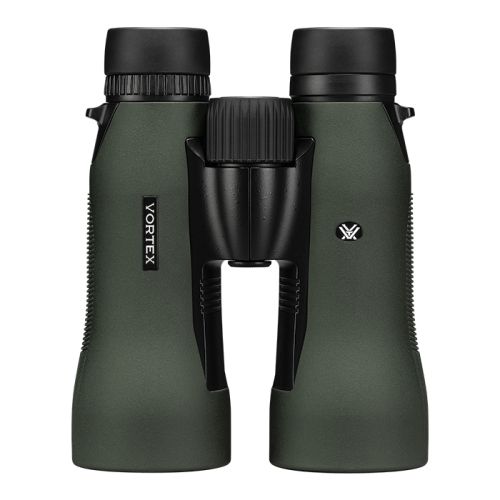

Vortex 15x56 Diamondback HD Binocular DB-218, a gateway to an unparalleled viewing experience by seamlessly combining precision-engineered optics with an expansive field of view, all encompassed within an ergonomic yet lightweight and durable frame.
Highlighted by oversized extra-low dispersion (ED) high-definition (HD) lenses, enriched with exclusive multicoatings, along with dielectric-coated and phase-corrected roof prisms, this binocular ushers in vibrant true-color images that radiate sharpness and encompassing clarity, devoid of distortions or color aberrations. Elevating its capabilities, these lenses are further treated with ArmorTek coatings, encouraging water to bead and roll away while also facilitating the effortless removal of oils and sap without the risk of scratching or residue. This ensures an unwaveringly clean and clear lens surface for an optimal viewing experience.
Prioritizing user comfort during extended observation, Vortex meticulously designed the binocular to minimize fatigue. Crafted from a lightweight yet robust magnesium alloy, its frame is embraced by a protective rubber armor that not only enhances grip stability but also shields against slips. Ingenious design details, such as raised dimpled palm pads and thumb indentations underneath, elevate grip stability and overall comfort. Built to thrive amidst challenging conditions, the housing is filled with argon and sealed with O-rings, ensuring waterproof integrity and resistance against internal fogging, even in the most extreme environments.
Notable Features Include:
- ArmorTek: Ultra-hard, scratch-resistant coating protects exterior lenses from scratches, oil and dirt.
- Multi-Coated: Fully Multi-Coated
- HD Lens Elements: HD
- Phase Correction: Coating on roof prism models enhances resolution and contrast.
- Rubber Armor: Provides a secure, non-slip grip, and durable external protection.
- Shockproof: Rugged construction withstands recoil and impact.
What's In The Box?
- Vortex 15x56 Diamondback HD Binocular
- GlassPak binocular case
- GlassPak case harness
- Comfort neck strap
- Tethered objective lens covers
- Rainguard eyepiece cover
- Lens cloth
- Tripod adaptor
| Close Focus Distance | 14 ft |
|---|---|
| Exterior Finish | Green |
| Eye Relief | 15.6mm |
| Field of View @ 1000 Yds | 230 ft |
| Weight | 34.8 oz |
| Length | 7.1" |
| Magnification Type | 15x |
| Objective Lens Size | 56mm |
| Weather Resistance | Waterproof & Fogproof |
| Warranty | Vortex VIP Warranty |
You May Also Like
Here’s some of our most similar products people are buying. Click to discover trending style.








